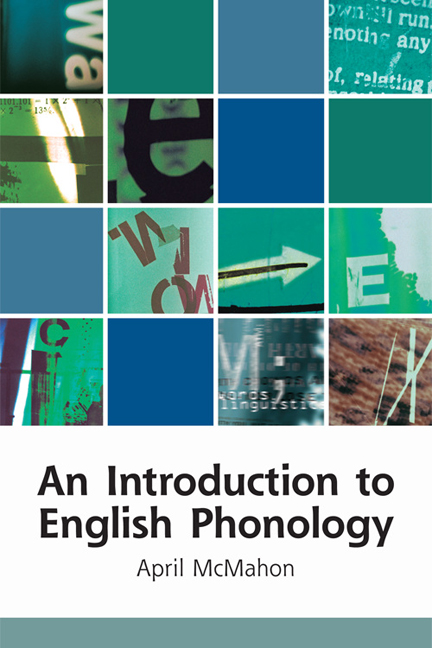Book contents
- Frontmatter
- Contents
- To colleagues
- 1 Sounds, spellings and symbols
- 2 The phoneme: the same but different
- 3 Describing English consonants
- 4 Defining distributions: consonant allophones
- 5 Criteria for contrast: the phoneme system
- 6 Describing vowels
- 7 Vowel phonemes
- 8 Variation between accents
- 9 Syllables
- 10 The word and above
- Discussion of the exercises
- References
- Index
1 - Sounds, spellings and symbols
Published online by Cambridge University Press: 13 October 2018
- Frontmatter
- Contents
- To colleagues
- 1 Sounds, spellings and symbols
- 2 The phoneme: the same but different
- 3 Describing English consonants
- 4 Defining distributions: consonant allophones
- 5 Criteria for contrast: the phoneme system
- 6 Describing vowels
- 7 Vowel phonemes
- 8 Variation between accents
- 9 Syllables
- 10 The word and above
- Discussion of the exercises
- References
- Index
Summary
Phonetics and phonology
Although our species has the scientific name Homo sapiens, ‘thinking human’, it has often been suggested that an even more appropriate name would be Homo loquens, or ‘speaking human’. Many species have soundbased signalling systems, and can communicate with other members of the same species on various topics of mutual interest, like approaching danger or where the next meal is coming from. Most humans (leaving aside for now native users of sign languages) also use sounds for linguistic signalling; but the structure of the human vocal organs allows a particularly wide range of sounds to be used, and they are also put together in an extraordinarily sophisticated way.
There are two subdisciplines in linguistics which deal with sound, namely phonetics and phonology, and to fulfil the aim of this book, which is to provide an outline of the sounds of various English accents and how those sounds combine and pattern together, we will need aspects of both. Phonetics provides objective ways of describing and analysing the range of sounds humans use in their languages. More specifically, articulatory phonetics identifies precisely which speech organs and muscles are involved in producing the different sounds of the world's languages. Those sounds are then transmitted from the speaker to the hearer, and acoustic and auditory phonetics focus on the physics of speech as it travels through the air in the form of sound waves, and the effect those waves have on a hearer's ears and brain. It follows that phonetics has strong associations with anatomy, physiology, physics and neurology.
However, although knowing what sounds we can in principle make and use is part of understanding what makes us human, each person grows up learning and speaking only a particular human language or languages, and each language only makes use of a subset of the full range of possible, producible and distinguishable sounds. When we turn to the characteristics of the English sound system that make it specifically English, and different from French or Welsh or Quechua, we move into the domain of phonology, which is the language-specific selection and organisation of sounds to signal meanings. Phonologists are interested in the sound patterns of particular languages, and in what speakers and hearers need to know, and children need to learn, to be speakers of those languages: in that sense, it is close to psychology.
- Type
- Chapter
- Information
- An Introduction to English Phonology , pp. 1 - 11Publisher: Edinburgh University PressPrint publication year: 2016



